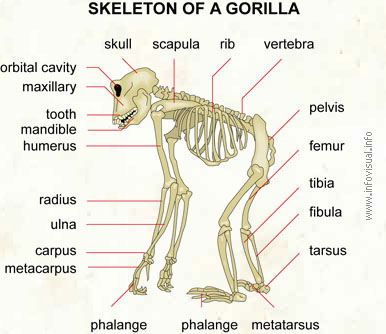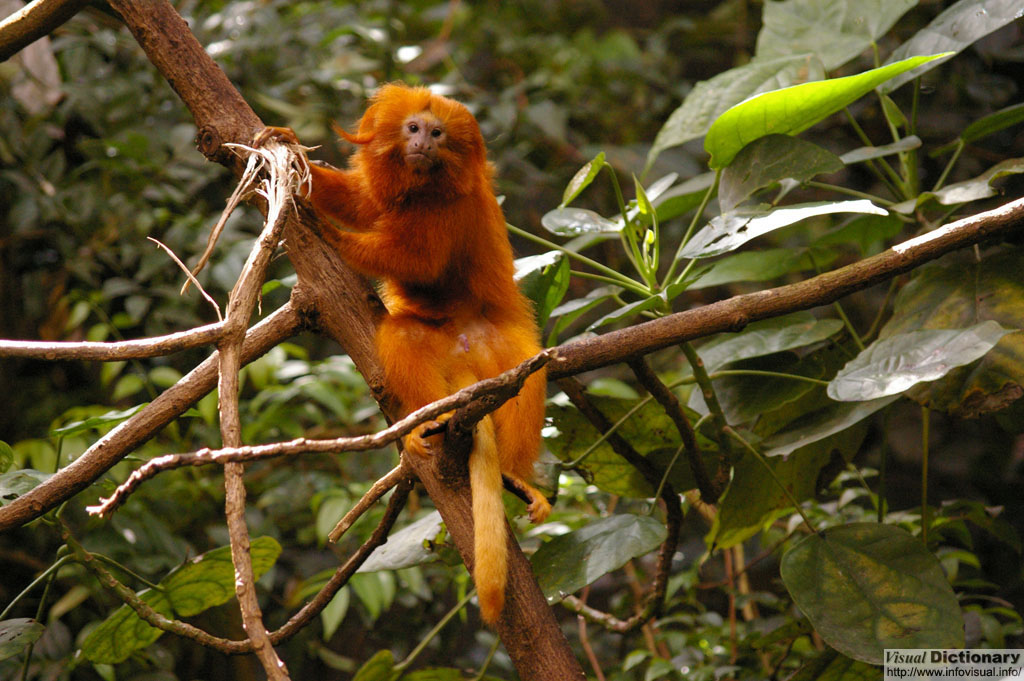Skeleton of a gorilla

Skull: bony case of the brain.
Scapula: shoulder bone.
Rib: bone of the thoracic cage.
Vertebra: bone of the spinal column.
Pelvis: set of bones to which the rear limbs are attached.
Femur: bone of the upper part of the rear limb.
Tibia: one of two bones of the lower part of the rear limb of a gorilla.
Fibula: one of two bones of the lower part of the rear limb of a gorilla.
Tarsus: heel bone.
Metatarsus: bone of the foot between the tarsus and the phalanges.
Phalange: toe bone.
Phalange: finger bone.
Metacarpus: bone of the hand between the carpus and the phalanges.
Carpus: wrist bone.
Ulna: one of two bones of the lower part of the front limb of a gorilla.
Radius: one of two bones of the lower part of the front limb of a gorilla.
Humerus: bone of the upper part of the front limb of a gorilla.
Mandible: lower jaw.
Tooth: hard organ set in the jaw, used to chew food.
Maxillary: jaw bone.
Orbital cavity: bony case of the brain.
Photo :
EN : Tamarin
(small monkeys)
FR : les
Tamarins
ES : Tamarino

Many tamarin species typically have mustache-like facial hairs. Their body size ranges from 18 to 30 cm and they weigh from 220 to 900 grams. Tamarins differ from marmosets primarily in the fact that the lower canine teeth are clearly longer than the incisors.